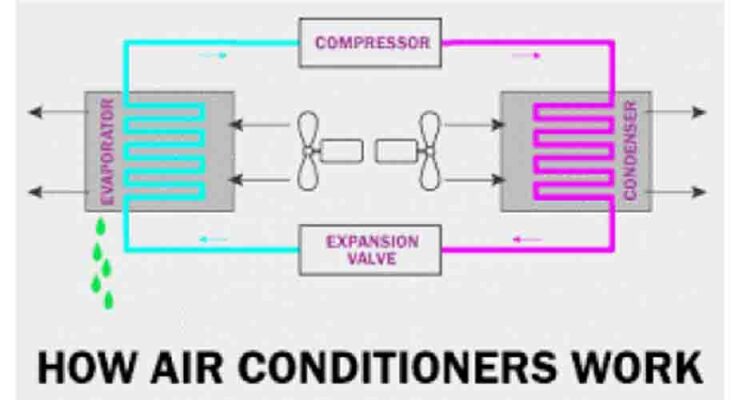It is difficult to understand how the air conditioner works and where the refreshing coolness comes from in the thirty-degree inferno. Consider this in the example of a split system. As is known from the school physics course, any liquid absorbs heat during evaporation. If you put alcohol or cologne on your hand, you will immediately feel cold. Conversely, when steam condenses, heat is released.
It is this well-known principle that any split system exploits. Slightly exaggerating, we can assume that its main element is a closed copper tube. One part of it passes through the indoor unit, the other through the outdoor unit hanging outside. This is the refrigeration circuit, inside which freon circulates. When passing through the indoor unit, freon turns into gas, which cools the room. It again becomes a liquid in the outdoor unit, giving off excess heat to the surrounding air. And so time after time.
True, freon is a lazy liquid and by itself will not flow anywhere. To do this, the air conditioner has a unique “pump” – a compressor that creates the necessary pressure in the refrigeration circuit. In addition, sections of the refrigeration circuit inside the blocks are equipped with aluminum plates that help freon share heat or coolness with the surrounding air more efficiently. These devices are called heat exchangers. And for the process to go even faster, the air is blown through them with the help of fans. The same thing happens in a window air conditioner; only all its components and assemblies are located in one housing.
If necessary, the air conditioner can also be used for heating. In this case, heat is not transferred from the room to the street, but vice versa. An air conditioner operating in the space heating mode is called a heat pump.


